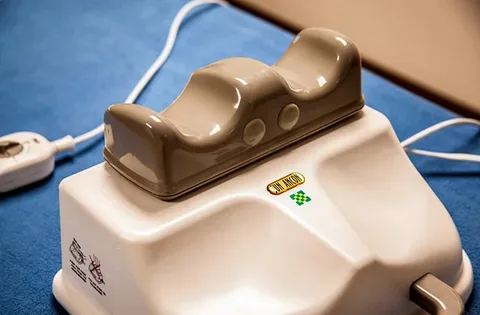Your home is more than just a place to live it’s one of the biggest investments you’ll make in your lifetime. But what happens when water, one of nature’s most powerful forces, starts to invade your property? From subtle dampness to visible cracks and dangerous mold, water damage can silently compromise the very structure of your home. That’s why professional waterproofing services are essential for preserving the integrity of your property. In this blog, we’ll explore how waterproofing helps defend your home from serious structural damage, enhances its longevity, and saves you from costly repairs down the line.
Waterproofing prevents foundational weakening caused by water seepage
The foundation of your home is its most critical structural element. Water seepage into the foundation—whether from heavy rains, groundwater, or plumbing leaks can erode the material over time. When moisture seeps in, it causes the soil beneath to shift or expand, leading to cracks and settlement issues. Waterproofing solutions like foundation coatings, membranes, and drainage systems provide a shield that keeps water out, helping maintain the strength and stability of your building’s base.
It protects walls from internal dampness and flaking paint
Have you ever noticed peeling paint, bubbling wallpaper, or dark patches on your walls? These are signs of internal moisture damage, often due to poor waterproofing. Moisture trapped inside the walls not only ruins the aesthetics but weakens the internal structure by damaging bricks, mortar, or plaster. Wall waterproofing services, such as exterior coatings or internal wall sealants, form a protective barrier against moisture and help keep your walls dry and strong.
Ceiling and terrace waterproofing stops water from leaking into interiors
Terraces and flat roofs are constantly exposed to harsh weather—sun, rain, and temperature fluctuations. Over time, cracks can form, allowing rainwater to seep through and affect ceilings. This often leads to water stains, fungus, and eventual structural weakening of beams or concrete. Applying a proper waterproofing membrane or cool roof coating can prevent water infiltration and protect the upper sections of your home from internal damage.
Basement waterproofing prevents mold, mildew, and corrosion
Basements are particularly prone to dampness due to their below-ground location. Without proper waterproofing, moisture can creep in through walls and floors, creating a perfect breeding ground for mold and mildew. These not only cause health problems but can damage wooden supports, rust metal fixtures, and corrode reinforcing steel. Basement waterproofing systems—like sump pumps, French drains, and negative-side sealants—are essential to keep the space dry and structurally sound.
Proper waterproofing reduces long-term repair and renovation costs
Water damage is often gradual, making it easy to ignore until it’s too late. By then, repairing the structure may involve major renovations and heavy costs. Waterproofing, on the other hand, is a preventive measure that may seem like an upfront expense but saves significant money over time. It reduces the need for repairs caused by cracked walls, floor replacements, paint touch-ups, or even structural reinforcements.
It protects electrical systems and prevents fire hazards
Water and electricity are a dangerous combination. Leaks in walls or ceilings can reach electrical wiring, causing short circuits, sparks, or even electrical fires. Moisture-laden environments also reduce the lifespan of electrical appliances. With proper waterproofing in moisture-prone areas, such as bathrooms, basements, and kitchen walls, you create a safer environment and lower the risk of electrical malfunctions and hazards.
Improves overall indoor air quality and living comfort
Structural damage from water intrusion doesn’t just affect the physical parts of your home—it impacts the air you breathe. Moisture encourages the growth of mold and mildew, which release spores that can cause respiratory problems, allergies, and skin irritation. Waterproofing keeps indoor spaces dry and clean, enhancing both your health and the overall living comfort in your home.
Frequently Asked Questions (FAQ)
Q1: How do I know if my home needs waterproofing?
Signs like wall dampness, peeling paint, musty odors, mold growth, and water seepage in basements or ceilings suggest that waterproofing is needed.
Q2: Can I do waterproofing myself?
DIY methods might work temporarily, but professional waterproofing services offer long-lasting protection and use industry-grade materials suited for specific problems.
Q3: How often should waterproofing be done?
Depending on the area and method used, waterproofing can last 5–10 years. It’s wise to inspect every few years for early signs of water damage.
Q4: Is waterproofing expensive?
Waterproofing is an investment that saves you future expenses. Costs vary based on area size, materials, and type of service, but it’s far cheaper than structural repair.
Q5: Which areas of the house need waterproofing the most?
Key areas include the roof, basement, bathroom, kitchen walls, foundation, and external walls, as they’re most exposed to moisture.
Conclusion
Water damage is one of the most common yet preventable causes of structural deterioration in homes. By investing in comprehensive waterproofing services you’re not just protecting walls and roofs you’re safeguarding your family’s health, reducing future repair costs, and preserving the long-term value of your property. A well-waterproofed home is a durable, safe, and comfortable space for years to come. Don’t wait for leaks to appear act early and waterproof wisely.













































